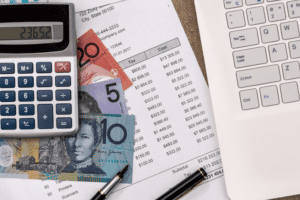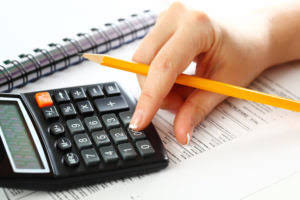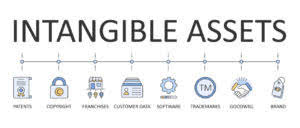
In this situation, a company that has been depreciating assets based on a 10-year schedule will update depreciation values based on a newly abbreviated eight-year useful life estimate. The depreciation of assets using the straight-line model divides the cost of an asset by the number of years in its estimated life calculation to determine a yearly depreciation value. The value is depreciated in equal amounts over the course of the estimated useful life. For example, the depreciation of an asset purchased for $1 million with an estimated useful life of 10 years is $100,000 per year. If an asset has an unlimited useful life, such as a piece of land, it is not considered a depreciable asset in accounting. That’s because such assets can be practically used forever without any apparent reduction in value.

Useful Life and Straight Line Depreciation
- You did not elect a section 179 deduction and elected not to claim any special depreciation allowance for the 5-year property.
- Generally, you cannot claim a section 179 deduction based on the cost of property you lease to someone else.
- She also uses the computer 40% of the time in her part-time consumer research business.
- Our mission is to empower readers with the most factual and reliable financial information possible to help them make informed decisions for their individual needs.
- The ACRS percentages for low-income housing real property, like the regular 15-year real property percentages, depend on when you placed the property in service.
An election (or any specification made in the election) to take a section 179 deduction for 2023 can be revoked without IRS approval by filing an amended return. The amended return must be filed within the time prescribed by law. The amended return must also include any resulting adjustments to taxable income. To determine any reduction in the dollar limit for costs over $2,890,000, the partner does not include any of the cost of section 179 property placed in service by the partnership.
- One table shows the percentage for property placed in service after June 22, 1984.
- The declining balance method is a type of accelerated depreciation used to write off depreciation costs earlier in an asset’s life and to minimize tax exposure.
- Because the house was placed in service after June 22, 1984, and before May 9, 1985, it is 18-year real property.
- In accounting, we do not depreciate intangible assets such as software and patents.
- The Ascent, a Motley Fool service, does not cover all offers on the market.
- This is because you and your spouse must figure the limit as if you were one taxpayer.
Depreciation and Taxes
The adjusted basis in the house when Nia changed its use was $178,000 ($160,000 + $20,000 − $2,000). On the same date, the property had an FMV of $180,000, of which $15,000 was for the land and $165,000 was for the house. The basis for depreciation on the house is the FMV on the date of change ($165,000) because it is less than Nia’s adjusted basis ($178,000). Other basis usually refers to basis that is determined by the way you received the property. For example, your basis is other than cost if you acquired the property in exchange for other property, as payment for services you performed, as a gift, or as an inheritance. You cannot use MACRS for motion picture films, videotapes, and sound recordings.

What is the difference between depreciation and amortization?
For example, a log maintained on a weekly basis, which accounts for use during the week, will be considered a record made at or near the time of use. It is not necessary to record information in an account book, diary, or similar record if the information is already shown on the receipt. However, your records should back up your receipts in an orderly manner. The inclusion amount cannot be more than the sum of the deductible amounts of rent allocable to the lessee’s tax year in which the amount must be included in gross income.
What Are the Different Ways to Calculate Depreciation?
You can use the following worksheet to figure your depreciation deduction using the percentage tables. If Ellen’s use of the truck does not change to 50% for business and 50% for personal purposes until 2025, there will be no excess depreciation. depreciable assets The total depreciation allowable using Table A-8 through 2025 will be $18,000, which equals the total of the section 179 deduction and depreciation Ellen will have claimed. John Maple is the sole proprietor of a plumbing contracting business.

Under this convention, you treat all property placed in service or disposed of during any quarter of the tax year as placed in service or disposed of at the midpoint of that quarter. This means that, for a 12-month tax year, 1½ months of depreciation is allowed for the quarter the property is placed in service or disposed of. Use this convention for nonresidential real property, residential rental property, and any railroad grading or tunnel bore. Under GDS, property is depreciated over one of the following recovery periods.
Causes of Depreciation
- For a detailed discussion of passenger automobiles, including leased passenger automobiles, see Pub.
- If you made this election, continue to use the same method and recovery period for that property.
- A qualifying disposition is one that does not involve all the property, or the last item of property, remaining in a GAA and that is described by any of the following.
- The sum-of-the-years’-digits method (SYD) accelerates depreciation as well but less aggressively than the declining balance method.
- Use the applicable convention, as explained in the following discussions.
- The election must be made separately by each person acquiring replacement property.
- Then, use the information from this worksheet to prepare Form 4562.
If you reduce the basis of your property because of a casualty, you cannot continue to use the percentage tables. For the year of the adjustment and the remaining recovery period, you must figure the depreciation yourself using the property’s adjusted basis at the end of the year. Under MACRS, averaging conventions establish when the recovery period begins and ends. The convention you use determines the number of months for which you can claim depreciation in the year you place property in service and in the year you dispose of the property.

Alternatively, you wouldn’t depreciate inexpensive items that are only useful in the short term. Units of production depreciation is based on how many items a piece of equipment can produce. Salvage value can be based on past history of similar assets, a professional appraisal, or a percentage estimate of the value of the asset at the end of its useful life. Buildings and structures can be depreciated, but land is not eligible for depreciation.
You can change from the declining balance method to straight line only on the original tax return for the year you first use the straight line method. You cannot make the change on an amended return filed after the due date of the original return (including extensions). The useful life of a piece of property is an estimate of how long you can expect to use it in your trade or business, or to produce income. It is the length of time over which you will make yearly depreciation deductions of your basis in the property. It is how long it will continue to be useful to you, not how long the property will last. The ACRS percentages for 18-year real property depend on when you placed the property in service in your trade or business or for the production of income during your tax year.
Claiming the Special Depreciation Allowance
However, you redetermine the estimated useful life only when the change is substantial and there is a clear reason for making the change. The useful life of the same type of property varies from user to user. When you determine the useful life of your property, keep in mind your own experience with similar property. You can use the general experience of the industry you are in until you are able to determine a useful life of your property from your own experience. Therefore, it would be helpful if you would include your daytime phone number, including the area code, in your correspondence. The 100% expensing is also available for certain productions (qualified film, television, and live staged performances) and certain fruit or nuts planted or grafted after September 27, 2017.